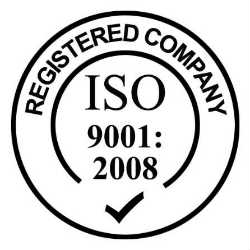Microsoft Dynamics NAV 2009 Warehouse Management (80259A)
This one-day course explores the Warehouse Management functionality of Microsoft Dynamics NAV 2009 from a user's perspective.
Modules in this hands-on classroom experience include functionality available in the standard edition of Microsoft Dynamics NAV.
Application functionality covered in the course includes receiving, internal processes, shipping, and item tracking in the warehouse.
A thorough understanding of these topics allows you to help companies meet their daily challenges in setting up and using the most extended way of warehousing in Microsoft Dynamics NAV.
Module 1: Setting Up Warehouse Management Systems
This module explains how users can set up a company for use with WMS including features such as locations, bins, put-away templates, and warehouse classes.
Lessons
Lab : Creating Zones and Bins
Lab : Setting Up Zone and Bins with Special Conditions
After completing this module, students should be able to do the following:
Module 2: Receiving Orders
This module explains how the Warehouse Management Systems (WMS) functionality in Microsoft Dynamics NAV 2009 helps companies to manage the receipt of inbound orders and handle the process of putting the items away in an efficient way.
Lessons
Lab : Receiving and Putting Items Away
Lab : Cancelling the Receipt
After completing this module, students should be able to do the following:
Module 3: Internal Warehouse Processes
This module describes how to use internal warehouse operations. By moving items within the warehouse, the use of space can be optimized. Movements, internal pick and put-always are used for that purpose.
Similarly to the Inventory module, where inventory and item ledger entries are created, changed, and counted, the Warehouse Management Systems also work with a set of journals.
That is warehouse item journal, warehouse reclassification journal, and warehouse physical inventory journal. All these aspects are covered in this chapter.
Lessons
Lab : Movement
Lab : Use Internal Pick
After completing this module, students should be able to do the following:
Module 4: Shipping
Warehouse Management Systems (WMS) provides the functionalities for handling items, such as shipping cross-docked items and break bulking items. These features of WMS along with shipping ordinary items are covered in this chapter.
Lessons
Lab: Shipping the Items
Lab: Shipping Cross-Docked Items
Lab: Break-bulk
After completing this module, students should be able to do the following:
Module 5: Serial/Lot Numbers
Warehouse Management Systems (WMS) provides item tracking functionality which is helpful when items are associated with warranties or have expiration dates, or when dealing with hazardous products.
The Item Tracking granule in Microsoft Dynamics NAV provides a company with an easy-to-use tracking system, which can take into account information about each unique piece of merchandise, such as:
When it was received
Where it was placed
When it expires
Which customer bought it and when
The functionality is based on using serial and lot numbers and allows for the receipt and shipment of multiple quantities with serial and lot numbers from a single order line entry.
Item tracking entries, which represent the transaction history of each individual item with serial and/or lot numbers, are the records used to trace an item along its movement through the supply chain.
Lessons
Lab: Item Tracking with WMS
After completing this module, students should be able to do the following:
Before attending this course, students must have:
In addition, it is recommended, but not required, that students have:
After completing this course, students will be able to:
This course is intended for partners selling and implementing Warehouse Management Systems (WMS) in Microsoft Dynamics NAV2009.
This audience typically includes application consultants who are tasked with assessing a customer's business needs and advising them on the use, configuration, and customization of the application.
Additionally, consultants who are responsible for training or supporting the customer will benefit from the course.



